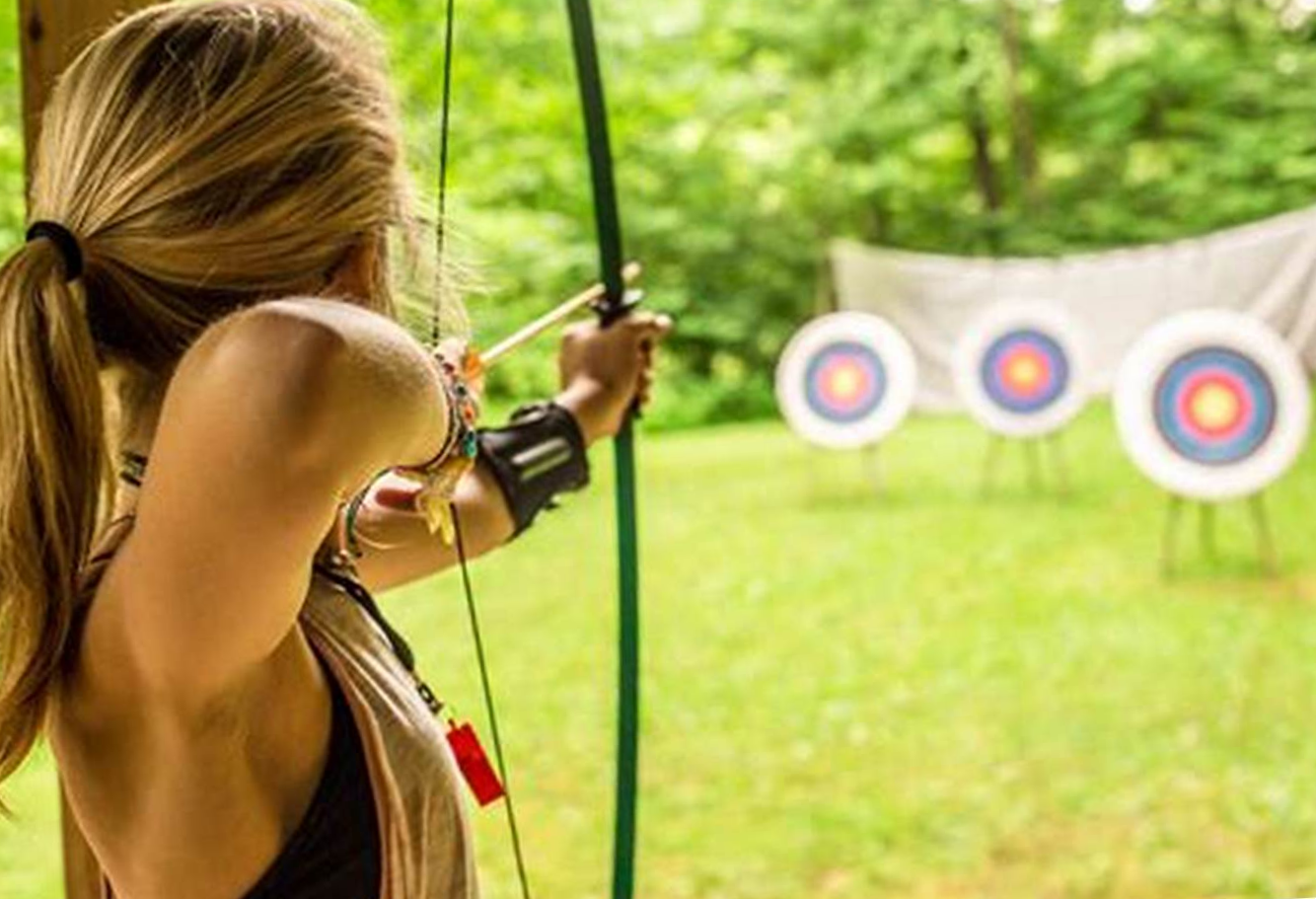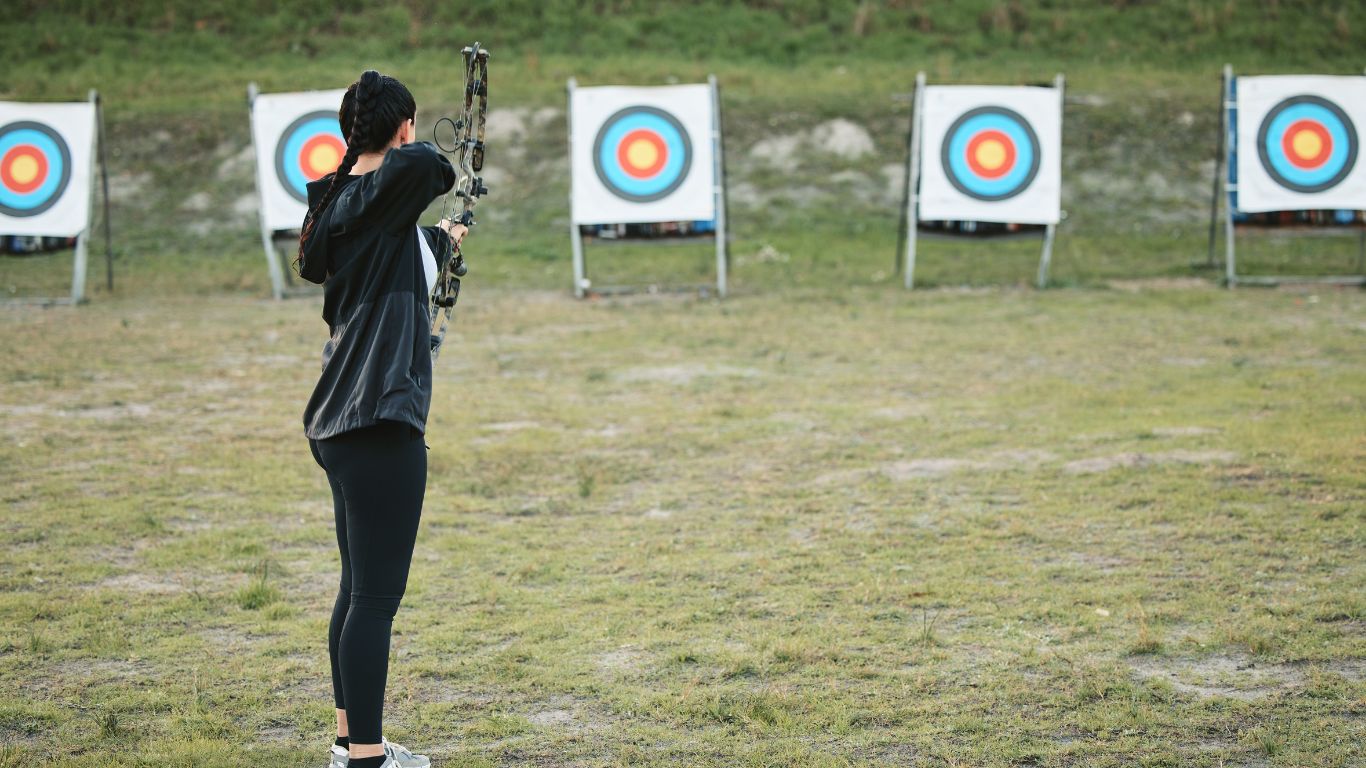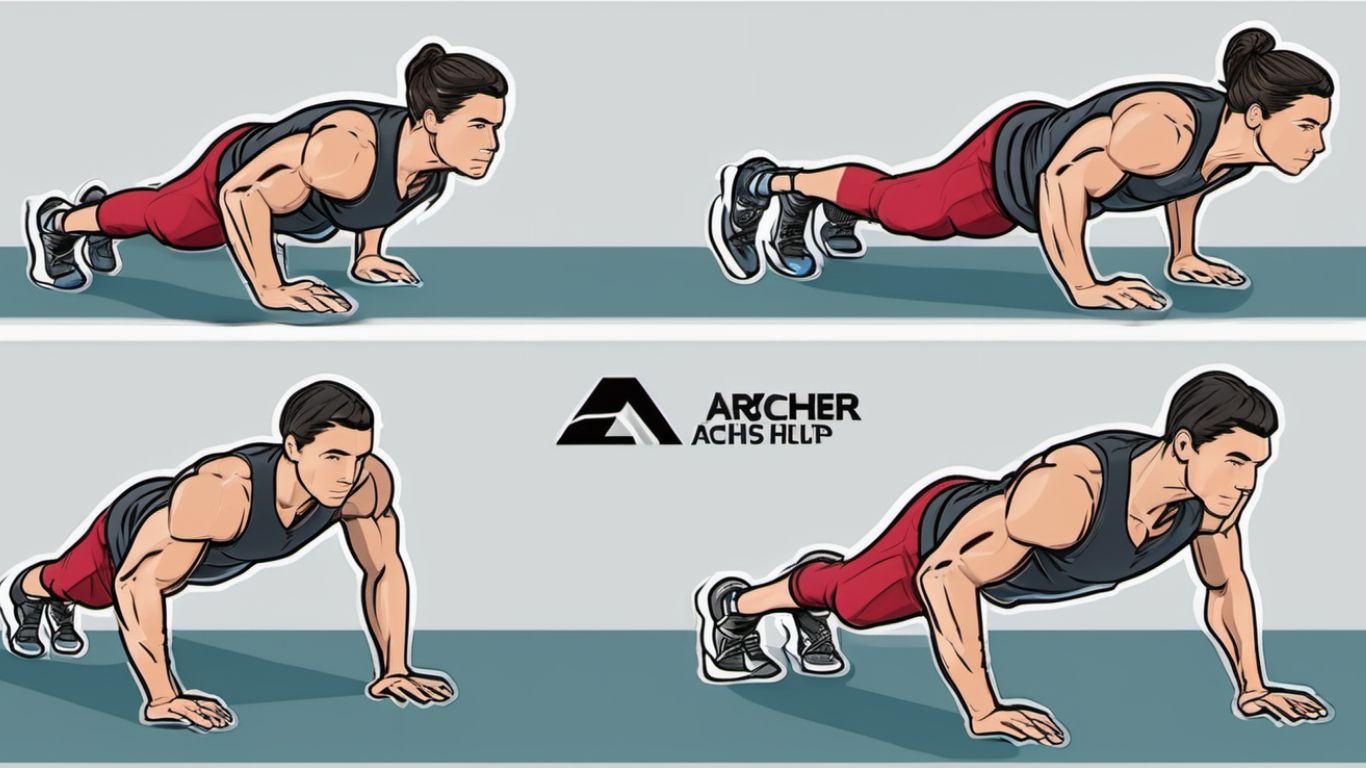Archery, an ancient art that has stood the test of time, continues to captivate enthusiasts all over the world. While the bow itself plays a crucial role, it is the arrow that often remains the unsung hero of precision and accuracy. In this article, we embark on a journey to unlock the secrets of archery arrows, delving into their construction, materials, and design elements that contribute to their remarkable performance on the shooting range or in the field.
Archery arrows have come a long way since their humble beginnings made from wood and feathers. Today, a myriad of factors go into the production of a single arrow, ensuring optimal flight and hitting the intended target with pinpoint accuracy. We will explore the different types of materials used in arrow shafts, such as carbon, aluminum, and wood, each offering unique pros and cons.
Additionally, we will delve into the fascinating world of arrow fletching, examining the impact of feather or synthetic vanes on stability and trajectory. By understanding the intricate science behind archery arrows, enthusiasts can gain insights that may enhance their shooting skills and elevate their overall experience in this age-old sport.
1. The Anatomy of an Archery Arrow: Understanding the Components 2. Choosing the Right Material: Analyzing the Pros and Cons of Different Arrow Types 3. Finding the Perfect Spine: A Guide to Selecting the Correct Arrow Stiffness 4. Weight Matters: Exploring the Importance of Arrow Weight for Accuracy and Speed 5. Fine-Tuning Flight: Tips for Adjusting Arrow Fletching and Nocks for Optimal Performance
1. The Anatomy of an Archery Arrow:
The Anatomy of an Archery Arrow: Understanding the Components Archery has been a part of human civilization for thousands of years, evolving from a means of survival to a popular sport and recreational activity. Central to the practice of archery is the arrow, a carefully crafted projectile that plays a critical role in achieving precision and accuracy. In this section, we will delve into the fascinating world of archery arrows and explore their intricate anatomy. At first glance, an archery arrow may seem like a simple object.
However, a closer examination reveals a sophisticated design that has been refined and perfected over centuries. The arrow consists of several distinct components, each serving a specific purpose to ensure optimal performance. The shaft, or body, of an arrow forms its main structural element. Traditionally, arrows were made from wood, benefiting from its lightweight nature and flexibility. Today, modern materials like carbon fiber and aluminum have gained popularity due to their enhanced durability and consistency.
The shaft acts as the backbone of the arrow, providing stability and guiding its flight path. One vital feature of the arrow is its nock, which is a small notch located at the rear end of the shaft. The purpose of the nock is to securely hold the arrow onto the bowstring and enable a consistent release. It ensures that the arrow is aligned properly and helps maintain a consistent flight trajectory, a crucial factor in achieving accuracy. Moving towards the front end of the arrow, we encounter the fletching.
Fletching traditionally refers to the feather vanes, but nowadays, synthetic materials such as plastic are commonly used. These three or more vanes are typically attached at the rear end of the shaft in a symmetrical manner. The fletching plays a significant role in stabilizing the arrow mid-air, minimizing wobbling or veering off course.
To achieve optimal stability, one vane, known as the “cock feather,” is often placed at a slight angle to the other two, known as the “hen feathers.” This configuration creates a slight torque that counteracts any potential spin imparted by the bowstring during release. Through careful alignment and positioning, fletching ensures that the arrow flies straight, leading to improved accuracy.
Lastly, we come to the arrowhead, or point. This is the part of the arrow that makes contact with the target, and it comes in various styles to suit different purposes. Traditional archers often use broadheads, which have multiple sharp blades used for hunting purposes. For target shooting, however, field points or bullet tips are typically preferred.
These points are usually made of metal and are designed for impact resistance, allowing for consistent penetration and easy removal from targets. Understanding the intricate components of an archery arrow is crucial for anyone seeking to enhance their skill in this ancient art.
Every aspect, from the shaft material to the fletching alignment, contributes to the arrow’s flight dynamics, making the difference between hitting the bullseye and missing the target. As archers continue to push the boundaries of the sport, advancements in materials, design, and technology promise even greater precision and performance.
By grasping the anatomy of an archery arrow, both beginners and seasoned archers can appreciate the fascinating engineering behind this seemingly simple object, and further their mastery of this challenging and rewarding sport.
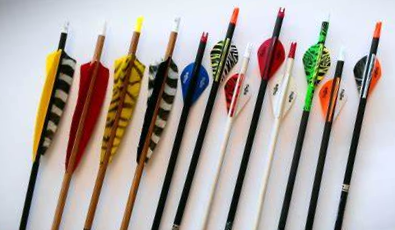
Credit amazon.com
2. Choosing the Right Material:
Choosing the Right Material: Analyzing the Pros and Cons of Different Arrow Types When it comes to archery, one of the most important factors to consider is the type of arrow you choose. The material of the arrow greatly affects its performance, accuracy, and overall feel. With numerous options available in the market, it’s essential to understand the pros and cons of different arrow types before making your selection.
In this section, we delve into the various materials used in arrow construction and explore their unique characteristics. One popular choice for arrow material is wood. Traditional and timeless, wooden arrows have been used for centuries. These arrows possess a natural beauty and provide a sense of nostalgia for archery enthusiasts. One of the key advantages of wooden arrows is their flexibility, which allows them to absorb the energy transferred from the bow.
This results in a smooth shot with reduced vibrations. Additionally, wooden arrows are lighter in weight compared to some other materials, making them easier to handle for beginners. However, wooden arrows may not be as durable as those made with modern materials, and they can be more susceptible to weather conditions, such as humidity and moisture. Another common material used in arrow construction is aluminum. Aluminum arrows offer several advantages that make them a popular choice among archers.
Firstly, they are exceptionally durable, capable of withstanding hard impacts without breaking. This durability ensures a longer lifespan for the arrows, making them a cost-effective option in the long run. Furthermore, aluminum arrows are known for their consistent performance, which is crucial for achieving precision in archery. The straightness and consistency of these arrows contribute to improved accuracy, making them a reliable choice for competitions or target shooting.
However, it is worth noting that aluminum arrows tend to be heavier compared to other materials, which may require some adjustment in technique and bow setup. Carbon arrows have gained significant popularity in recent years due to their exceptional performance characteristics. One of the primary advantages of carbon arrows is their incredible strength-to-weight ratio, which provides increased speed and kinetic energy upon release.
This enhanced energy transfer results in a flatter trajectory and improved penetration. Carbon arrows are also highly resistant to bending and warping, ensuring consistent performance shot after shot. Additionally, they are not affected by weather conditions like humidity or temperature, making them suitable for various environments. However, it’s important to mention that carbon arrows can be relatively expensive compared to other options, and their stiffness can lead to increased hand shock and vibration, affecting the overall feel of the shot.
Lastly, we have fiberglass arrows, which are often chosen for their affordability and durability. Fiberglass arrows are less expensive than many other materials, making them an excellent choice for beginners or those on a tight budget. They are also known for their resilience, withstanding the wear and tear of daily use. However, fiberglass arrows are generally heavier than other materials, which can impact the overall performance and accuracy.
They may also suffer from decreased speed and kinetic energy. Choosing the right arrow material depends on various factors, including personal preference, skill level, and intended use. Each material has its own unique set of advantages and disadvantages, and finding the perfect fit requires careful consideration. Whether you prefer the classic elegance of wooden arrows, the reliability of aluminum, the high performance of carbon, or the affordability of fiberglass, the material you choose will undoubtedly play a significant role in your archery journey.
3. Finding the Perfect Spine:
Finding the Perfect Spine: A Guide to Selecting the Correct Arrow Stiffness In the captivating world of archery, choosing the right equipment is essential to unlocking your full potential as an archer. One crucial element that can greatly impact your accuracy and consistency is selecting the correct arrow stiffness, also known as the arrow spine.
The spine of an arrow refers to its resistance to bending, and finding the perfect spine for your specific needs can be a game-changer in your archery journey. Understanding arrow stiffness may seem like a daunting task, but fear not, as we delve into the intricacies of selecting the correct spine, you’ll soon unravel the secrets to precision shooting.
The spine of an arrow is primarily influenced by two factors: arrow length and draw weight. These two factors directly affect the amount of energy transmitted to the arrow upon release and determine how the arrow flexes during flight. It’s important to strike the right balance to achieve optimal arrow flight and accuracy. When it comes to arrow length, longer arrows generally require more stiffness to compensate for the increased weight.
On the other hand, shorter arrows tend to be more forgiving with softer spines. It is crucial to consider your personal draw length when deciding on arrow length, as this will greatly impact your selection of arrow stiffness. Draw weight is another vital factor affecting arrow spine. The higher the draw weight of your bow, the stiffer the arrow spine you’ll need to ensure a proper transfer of energy.
If you use an arrow with insufficient stiffness, it may flex too much, resulting in erratic flight patterns and reduced accuracy. Conversely, if the arrow is too stiff, it may not flex enough, leading to decreased accuracy and potential damage to the bow or arrow. An archery pro shop or an experienced archer can assist you in determining your specific draw weight and arrow length to guide you towards selecting the ideal arrow stiffness.
They may use a spine selection chart, which correlates various arrow specifications with recommended stiffness values. This helpful tool ensures that you narrow down your options and find the best arrow spine for your setup. Apart from draw weight and arrow length, it’s crucial to consider the type of archery you intend to pursue – whether it’s target shooting, 3D archery, or hunting. Each discipline has its unique demands, influencing the kind of arrow stiffness you should choose.
Target shooters often opt for stiffer spines to achieve flat trajectories, while hunters may select slightly softer spines to account for the penetrating power needed for game animals. Once you’ve identified the appropriate arrow spine, it’s important to test its performance through trial and error. Experimenting with different arrow spines can help fine-tune your setup and optimize your shooting experience.
Pay close attention to arrow flight characteristics such as grouping, consistency, and arrow clearance. In conclusion, selecting the correct arrow stiffness, or spine, is a vital aspect of archery that significantly impacts your accuracy and consistency. By considering variables like arrow length, draw weight, and the type of archery you engage in, you can guide your selection process.
Consulting with experts, utilizing spine selection charts, and experimenting with different arrow spines will empower you to find the perfect spine, unlocking your true potential as an archer and propelling you towards precision and success.
4. Weight Matters:
In the world of archery, where precision is key, every tiny detail counts. From the type of bow you choose to the way you hold your stance, the factors that contribute to your accuracy are numerous. However, one crucial aspect that often goes overlooked is the weight of your arrow.
Many beginners may think that all arrows are created equal, but the truth is that weight plays a significant role in both accuracy and speed. When it comes to arrows, weight matters more than you might imagine. The weight of an arrow is primarily determined by its components – the shaft, the point, and the fletchings.
These components come in various materials and designs, each of which contributes to the final weight of the arrow. So why does arrow weight matter? Let’s delve deeper into the reasons behind its significance. First and foremost, arrow weight affects the accuracy of your shots. A heavier arrow tends to be more stable in flight due to its increased momentum.
This stability allows the arrow to follow a truer trajectory, minimizing the impact of any external factors like wind or air resistance. In contrast, a lighter arrow may be more susceptible to these influences, making it more challenging to hit your target consistently.
Furthermore, arrow weight has a direct impact on kinetic energy. Kinetic energy is the energy possessed by a moving object and is crucial for penetration. A heavier arrow possesses more kinetic energy, which translates to a more powerful impact when it strikes the target.
This enhanced penetration can mean the difference between a successful shot and a near miss, especially when dealing with tougher materials or hunting game. In addition to accuracy and penetration, arrow weight also influences the speed of your shots. As intuitive as it may seem, a lighter arrow will be faster than a heavier one.
This is because a lighter arrow requires less force to accelerate, allowing it to zip through the air with higher velocity. However, speed isn’t the only factor to consider. The balance between accuracy and speed is a delicate one, and a feather-light arrow may sacrifice stability and consistency, leading to compromised accuracy.
Finding the optimal weight for your arrows involves a balance between the requirements of your bow, your shooting style, and your intended purpose. A good rule of thumb for beginners is to start with arrows of medium weight and make adjustments as needed. This approach allows you to develop your skills while gaining a better understanding of how different weights affect your shooting.
As you progress in your archery journey, experimenting with different arrow weights will enhance your understanding of their effects on accuracy and speed. Remember, though, that the ideal weight may vary depending on your specific circumstances, such as the type of archery you practice or whether you are hunting or target shooting.
Arrow weight has a significant impact on both accuracy and speed in archery. The weight of your arrow affects its stability in flight, the kinetic energy it possesses, and its overall speed. By understanding the importance of arrow weight and finding the right balance for your needs, you can unlock the secrets of precision and take your archery skills to new heights.
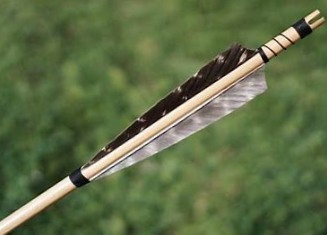
Credit amazon.com
5. Fine-Tuning Flight: Tips for Adjusting Arrow Fletching and Nocks for Optimal Performance
In the world of archery, fine-tuning your equipment is essential to achieving optimal performance. Every archer knows that the key to accuracy lies in understanding how to adjust arrow fletchings and nocks. These seemingly small details play a crucial role in the flight of an arrow and can greatly impact its overall performance.
In this section, we will delve into the secrets of fine-tuning flight and provide you with valuable tips to help you achieve the best results. When it comes to adjusting arrow fletchings, there are a few important factors to consider. The fletchings, also known as feathers or vanes, are the small features attached to the back end of the arrow shaft.
Their purpose is to stabilize the arrow during flight and ensure a straight and accurate trajectory. There are typically three fletchings, evenly spaced around the shaft, but some archers also choose to use four fletchings for added stability. The first consideration in adjusting fletchings is their size and shape. Different types of fletchings offer varying levels of stability and control.
Larger fletchings tend to provide more stability and are suitable for beginners or archers shooting larger game. On the other hand, smaller fletchings offer less drag, resulting in a flatter trajectory and greater speed. It’s important to find a balance that suits your individual shooting style and needs. Another crucial aspect of fletching adjustment is their positioning on the arrow shaft.
The placement of the fletchings determines the arrow’s spin and stability during flight. Traditionally, fletchings are mounted with a slight degree of offset or helical twist. This twist helps induce arrow spin, which improves stability and accuracy. However, the degree of offset may vary depending on factors such as bow type, arrow weight, and shooting distance.
Experimentation and fine-tuning are often necessary to find the perfect balance for your setup. Moving on to arrow nocks, these small components play a vital role in the arrow’s release and flight. Nocks are the small grooves or notches at the back end of the arrow, where the bowstring rests. Properly adjusted nocks ensure a consistent and clean release, allowing the arrow to fly true to its intended target.
One important consideration when adjusting nocks is their fit on the bowstring. The fit should be snug but not too tight, as a loose or tight fit can cause inconsistencies in arrow flight. It’s recommended to use nocking points on the bowstring to ensure a consistent placement of the arrow. Nocking points are small attachments that provide a reference point for aligning the arrow and bowstring during each shot.
Furthermore, the angle of the arrow nock can also affect its flight. Some archers prefer a level nock, while others prefer a slightly upward or downward angle. The angle is often a matter of personal preference and shooting style. Experimenting with different angles can help you determine what works best for you. In conclusion, fine-tuning the flight of your arrows requires careful attention to detail, particularly when adjusting fletchings and nocks.
The size, shape, positioning, and fit of fletchings and nocks all contribute to the arrow’s stability, accuracy, and overall performance. Understanding these factors and experimenting with various adjustments will enable you to find the perfect balance that suits your individual shooting style. Ultimately, the secret to unlocking the full potential of precision in archery lies in paying close
Archery arrows are more than just simple tools used in the sport of archery. They hold a rich history of evolution and are designed with precision to optimize accuracy and performance. From the shaft materials to the fletching and tips, every component plays a crucial role in unlocking the secrets of precision.
The remarkable world of archery arrows not only fascinates enthusiasts and professionals but also offers a glimpse into the art and science of this ancient practice. So, whether you’re a beginner or an experienced archer, next time you pick up an arrow, take a moment to appreciate the craftsmanship and ingenuity behind this seemingly simple yet remarkable weapon of choice.





